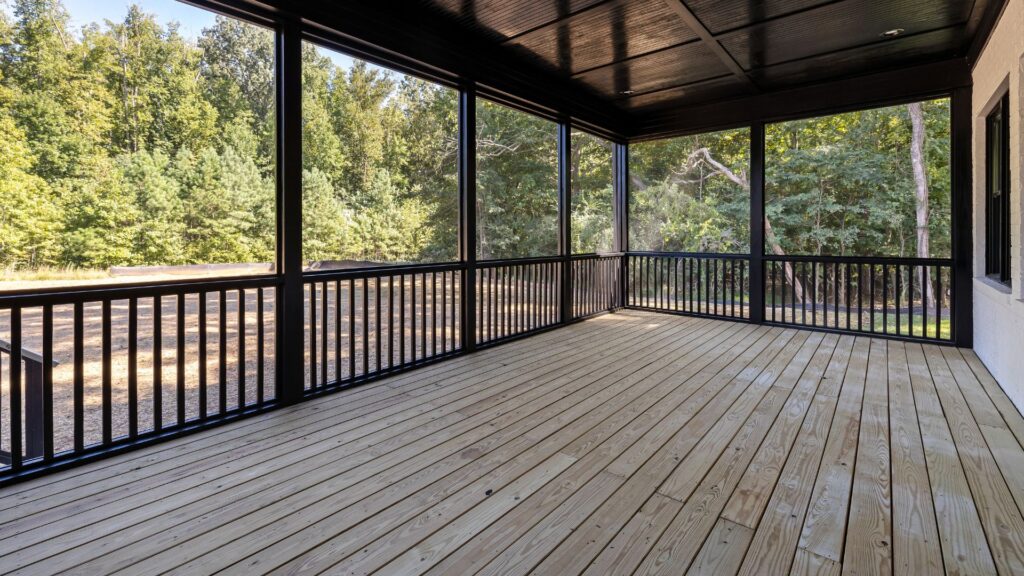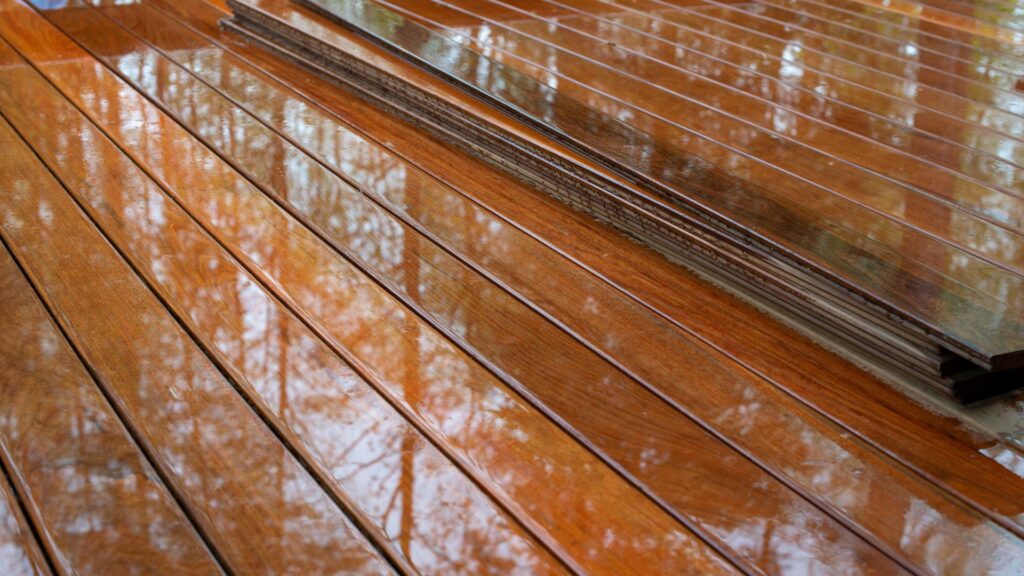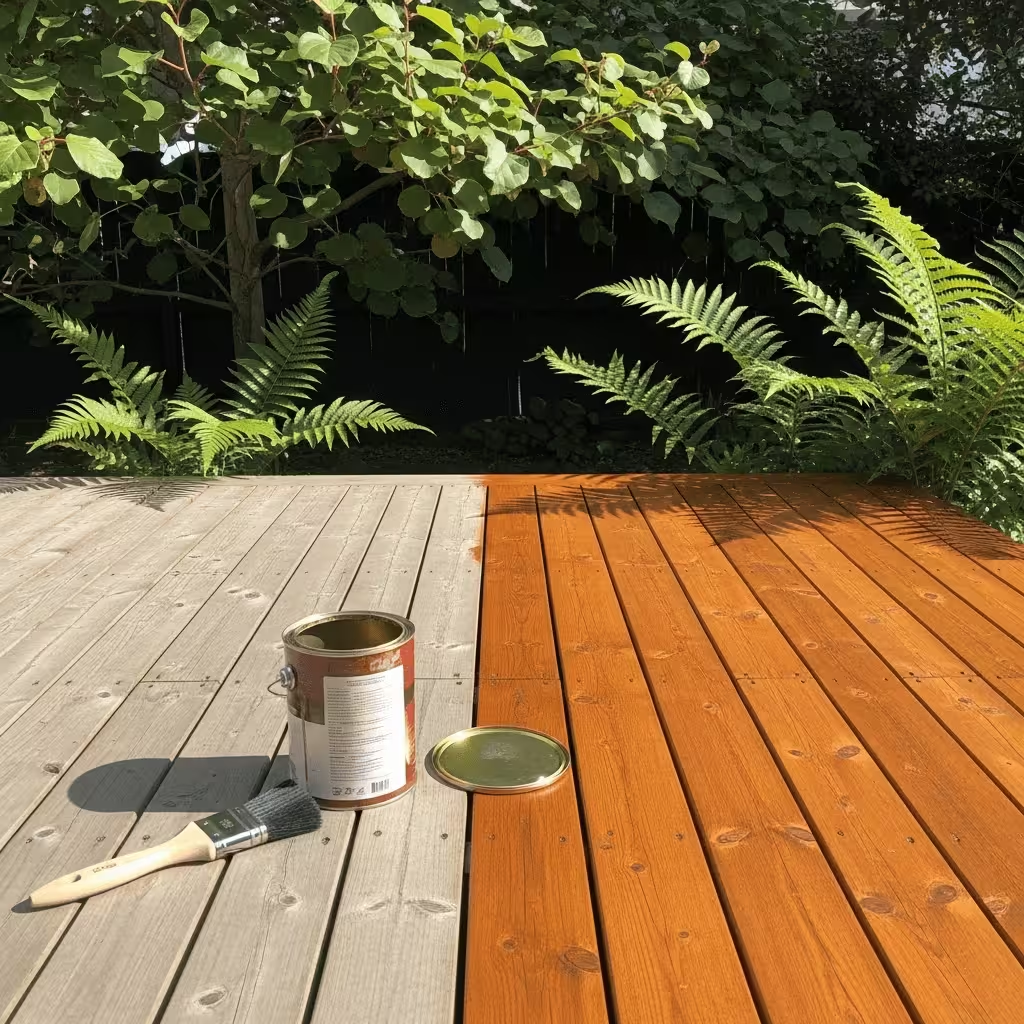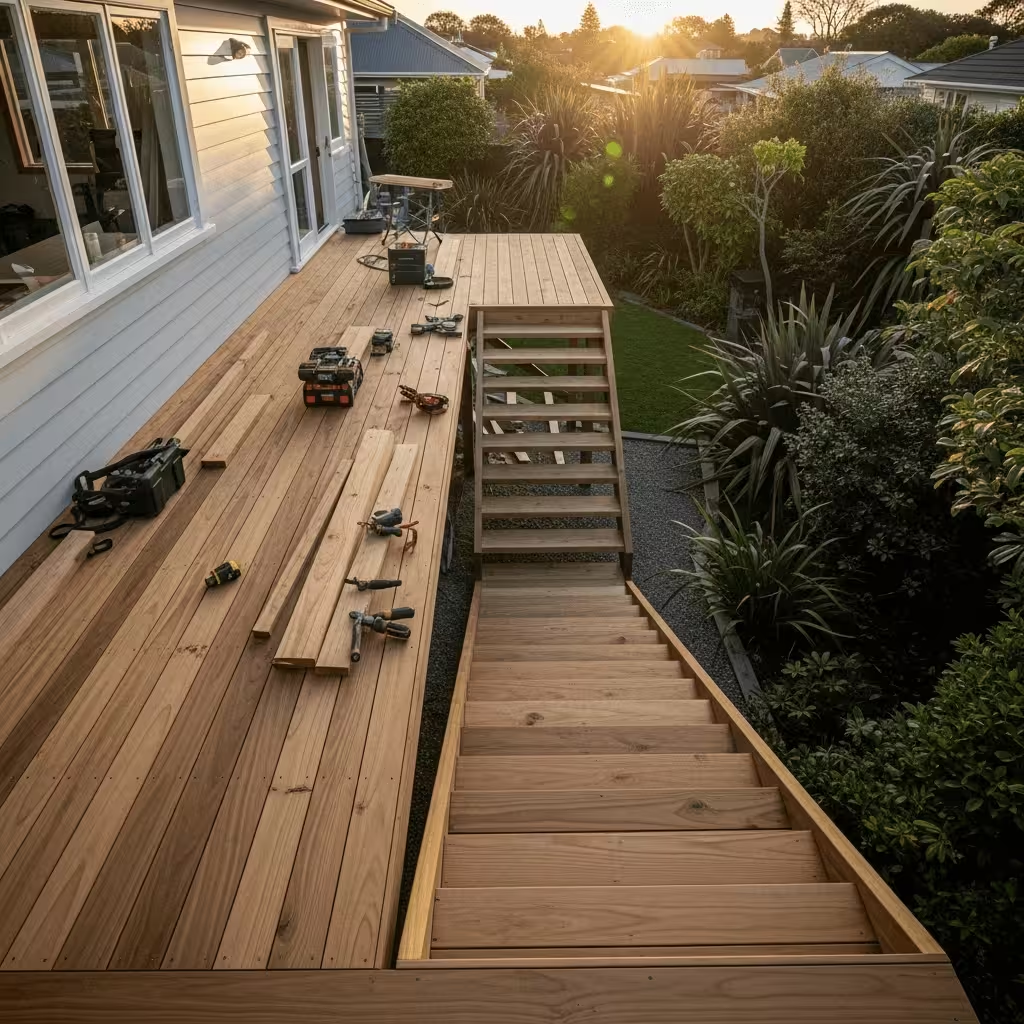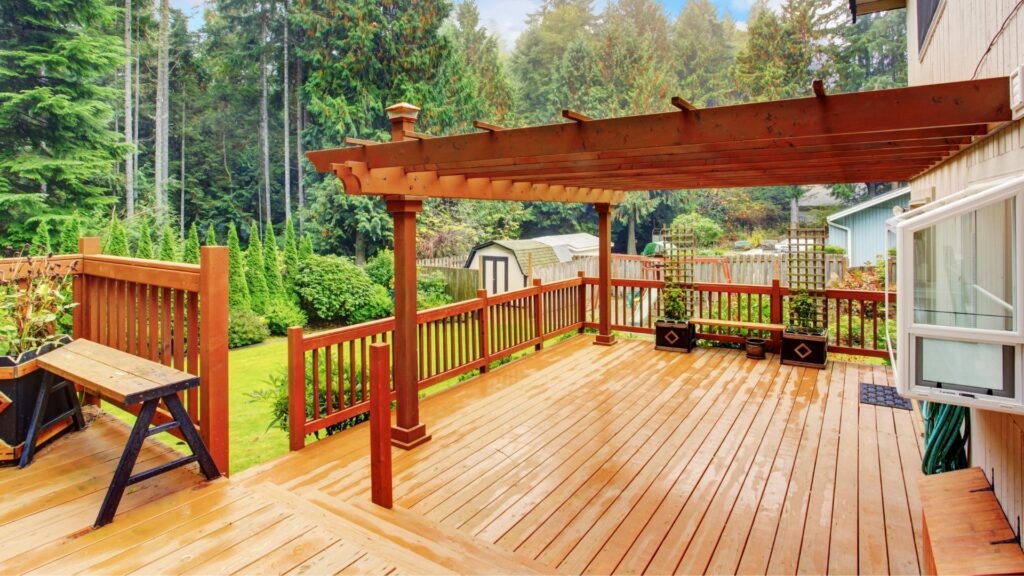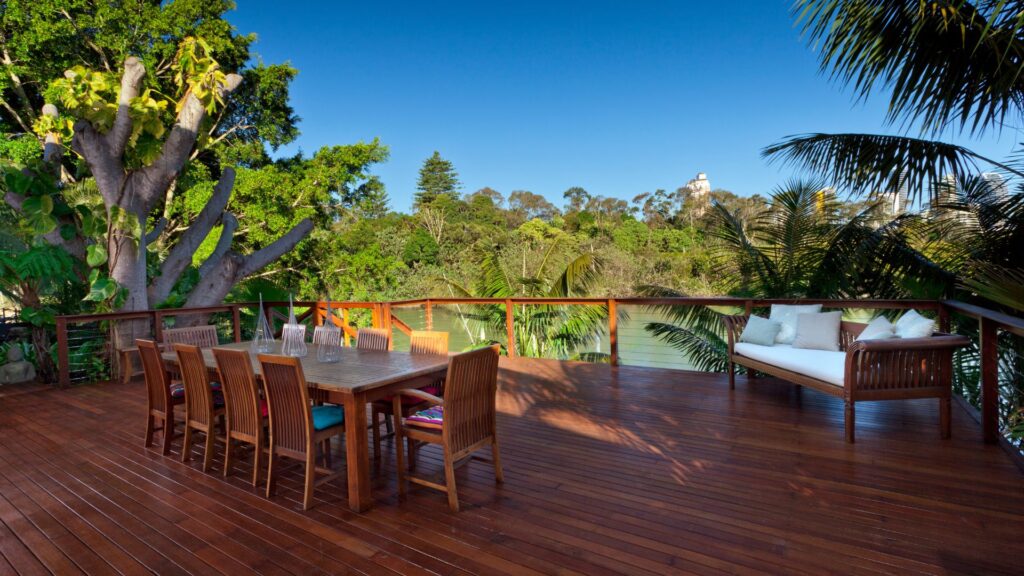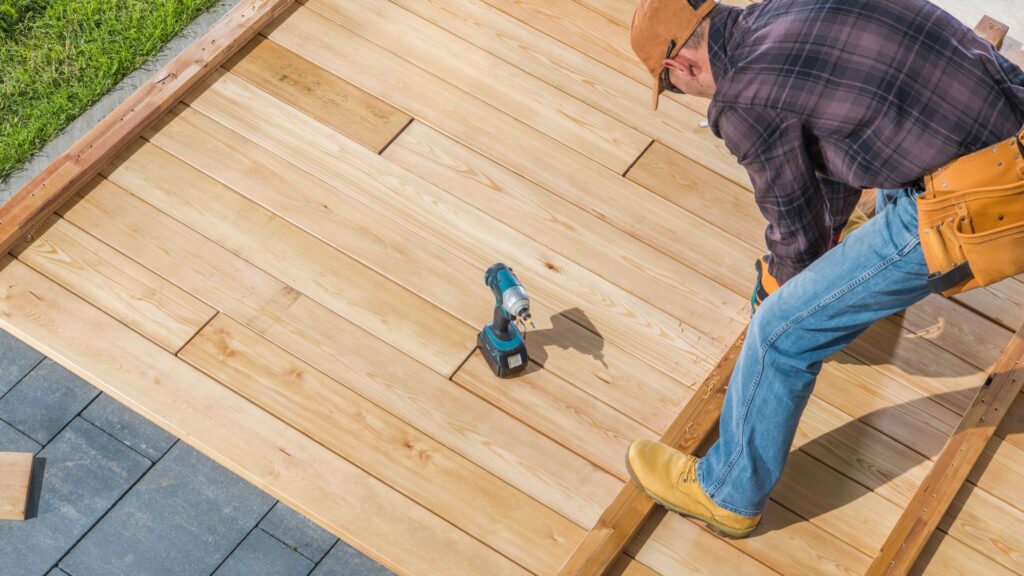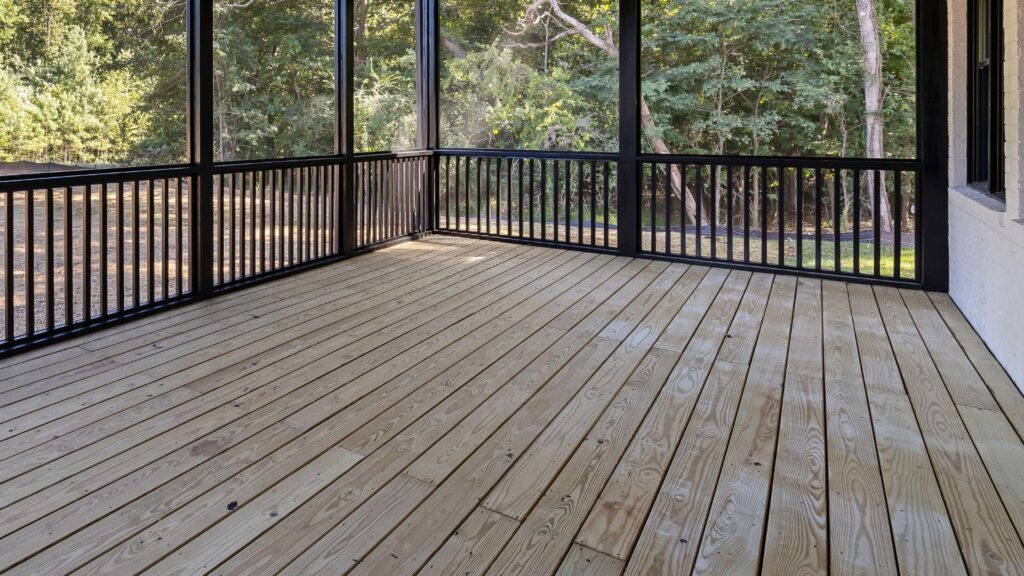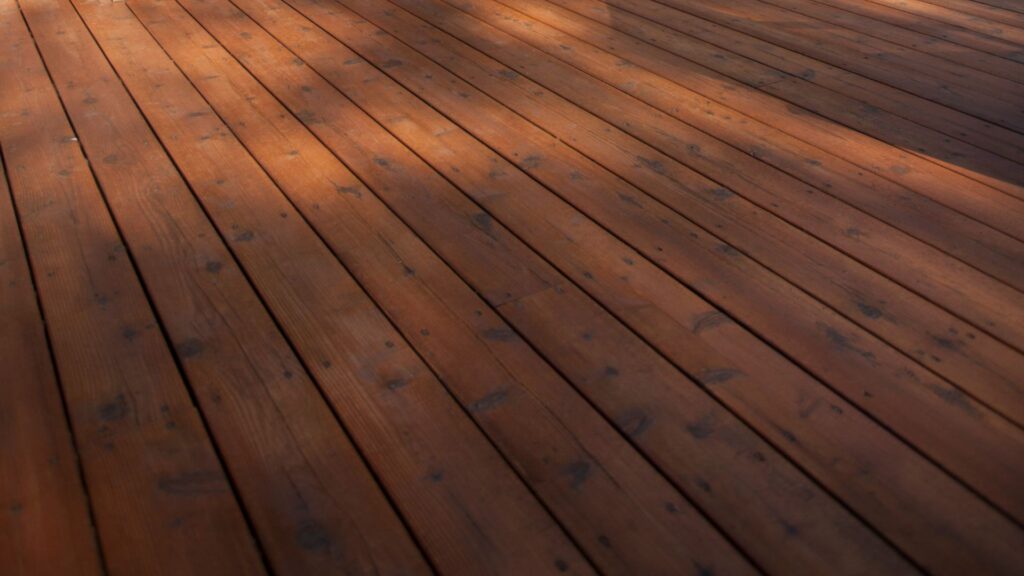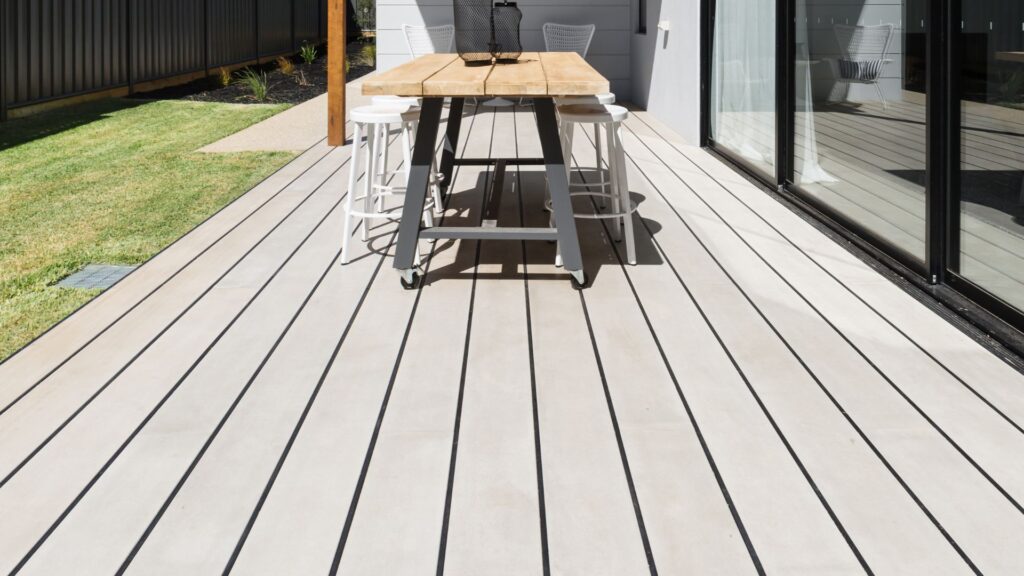Welcome to your guide on composite decking in NZ, where we’ll explore why so many Kiwi homeowners are choosing this modern alternative to timber for their outdoor spaces. Composite decking blends wood fibers and recycled plastic to create a durable, low-maintenance surface that stands up to New Zealand’s sun, rain, and coastal conditions. Whether you’re planning a backyard renovation, building a new deck, or simply curious about your options, this guide will help you understand the benefits, costs, and practical tips for getting the most out of your investment. By the end, you’ll know exactly why composite decking has become a top choice for creating beautiful, functional, and lasting outdoor living areas across the country.
Composite decking in NZ is a durable, low-maintenance alternative to timber, made from a blend of wood fibers and recycled plastic. It’s ideal for New Zealand’s climate, resisting rot, mold, and pests while offering a wide range of colours and styles. Popular for its long lifespan and eco-friendly design, composite decking is perfect for homeowners wanting a modern, easy-care outdoor space.
Table of Contents
What Is Composite Decking
Composite decking is a type of decking material made from a mix of wood fibers and recycled plastic. This blend creates boards that mimic the look of natural timber but with better durability and minimal upkeep. The wood fibers give the boards a natural grain appearance, while the recycled plastic adds strength, moisture resistance, and longevity. Because of this combination, composite decking has quickly become a favorite choice for many homeowners who want the beauty of wood without the ongoing maintenance.
How It Differs From Traditional Timber Decking
Traditional timber decking is made entirely from natural wood, which requires regular staining, sealing, and cleaning to protect it from weather damage, pests, and decay. Over time, timber decks can warp, crack, or develop mold, especially in areas with heavy rainfall or high humidity. Composite decking, on the other hand, does not splinter, fade as quickly, or attract termites like wood does. It also resists moisture and staining better, making it a low-maintenance option that stays looking good for years with just simple cleaning.
Brief History Of Composite Decking In NZ
Composite decking first appeared in New Zealand in the early 2000s when homeowners began looking for modern, eco-friendly alternatives to traditional wood. With growing concerns about sustainability and deforestation, the use of recycled materials gained attention. Over time, New Zealand suppliers expanded their product lines, offering more colors, finishes, and styles to meet the demands of local homeowners. Today, composite decking has become a leading choice for outdoor projects across the country, especially for families wanting long-lasting decks that can handle NZ’s varied weather conditions.
By understanding what composite decking is, how it differs from timber, and its growth in New Zealand, you can make a more informed choice for your next outdoor project.
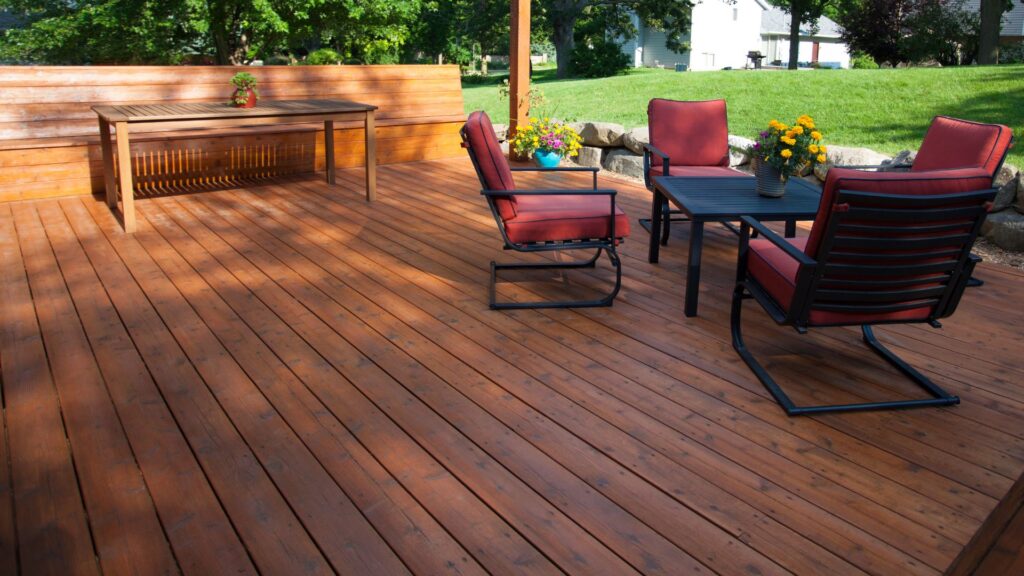
Why Composite Decking Is Popular In NZ
Composite decking has become a top choice for many Kiwi homeowners because it fits perfectly with New Zealand’s unique lifestyle and climate. It offers a balance of durability, style, and sustainability that traditional timber decking often struggles to match. Here’s why it continues to grow in popularity across the country:
Climate Suitability: Handles NZ’s Wet And Sunny Conditions
New Zealand’s weather can be unpredictable, with wet winters and long, sunny summers. Composite decking is built to withstand these conditions. Unlike timber, it doesn’t warp, split, or rot after heavy rain. Its UV resistance helps prevent fading or cracking, even in areas with strong sun exposure. Whether you live in a coastal town or an inland city, composite decking remains stable and reliable year-round.
Low Maintenance Vs Timber Decking
One of the biggest advantages of composite decking is how little upkeep it requires. Timber decks need regular sanding, staining, and sealing to stay in good shape. Composite decking only needs a simple wash with mild soap and water to keep it looking fresh. This makes it a great option for busy homeowners who want a beautiful deck without the ongoing maintenance work.
Long-Term Cost Savings
Although composite decking has a higher upfront cost, it often works out cheaper in the long run. Traditional timber decking demands frequent treatments and repairs, which add up over time. Composite boards are built to last decades with minimal maintenance, meaning you spend less over the lifetime of your deck. For homeowners thinking about long-term value, composite decking is a smart investment.
Eco-Friendly Appeal For Sustainability-Conscious Homeowners
More New Zealanders are looking for ways to make eco-friendly choices in their homes. Composite decking supports this goal by using recycled materials, such as reclaimed wood fibers and plastic. By choosing composite, you’re helping reduce landfill waste while enjoying a product that is both durable and sustainable.
A growing number of Kiwis are embracing composite decking not just for its look and durability but also for the convenience and eco-benefits it offers. If you’re planning to build or upgrade your outdoor space, composite decking is an option that blends style, practicality, and long-term value.
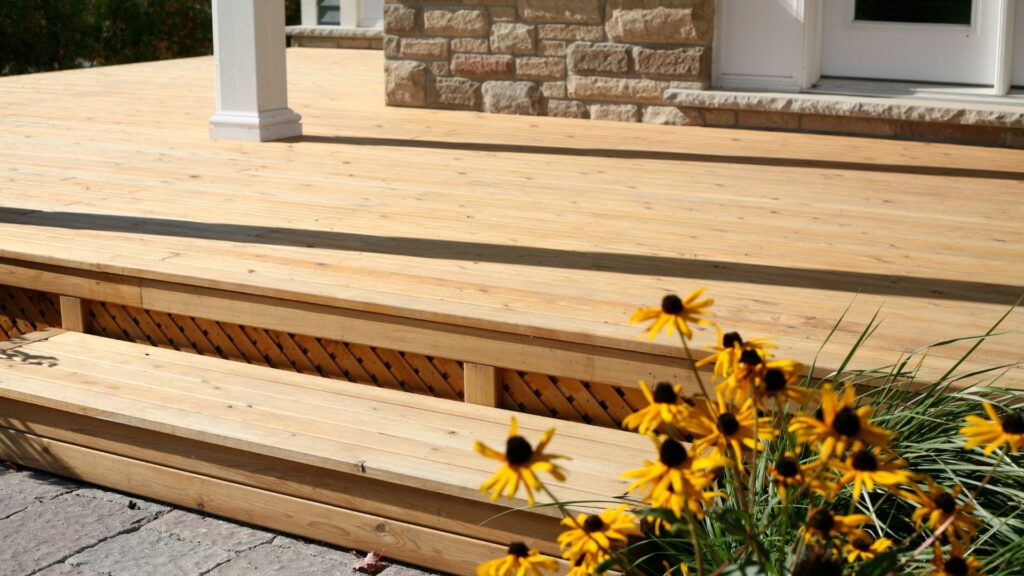
Pros And Cons Of Composite Decking
When planning a new deck, it’s important to understand the strengths and weaknesses of composite decking. Knowing these details helps you make an informed choice that suits your lifestyle, budget, and New Zealand’s unique conditions. Here’s a clear breakdown of what you need to know.
Pros
- Durability and resistance to rot, mold, and pests: Composite decking is built to handle New Zealand’s changing weather, from heavy rain to harsh UV rays. Unlike timber, it won’t rot, warp, or attract termites, making it a reliable long-term investment.
- Minimal maintenance: One of the biggest advantages of composite decking is how little effort it requires. There’s no need for sanding, staining, or sealing. A simple wash with warm, soapy water a few times a year keeps it looking fresh.
- Wide range of styles and colours: Composite decking offers plenty of design options to match your home. Whether you want a natural timber look or a modern finish, there are colours, textures, and grain patterns to suit any outdoor space.
- Slip-resistant and safe for families: Safety matters, especially in wet conditions. Most composite decking products come with slip-resistant surfaces, making them safer for children and older family members, even after rain.
Cons
- Higher upfront cost: Composite decking typically costs more to purchase and install compared to traditional timber. While it pays off in the long run through reduced maintenance costs, the initial investment can be a barrier for some homeowners.
- Can get hotter in direct sunlight: Darker boards can heat up on sunny days, making them less comfortable underfoot. Choosing lighter colours or adding shade can help reduce heat buildup.
- Requires professional installation for best results: While DIY is possible, composite decking often benefits from professional installation. Experts can ensure proper spacing, secure fittings, and a finish that lasts.
Understanding the pros and cons of composite decking ensures you make the right decision for your home. By weighing the durability, safety, and low maintenance against the initial costs and installation needs, you can choose a solution that delivers value and comfort for years to come.
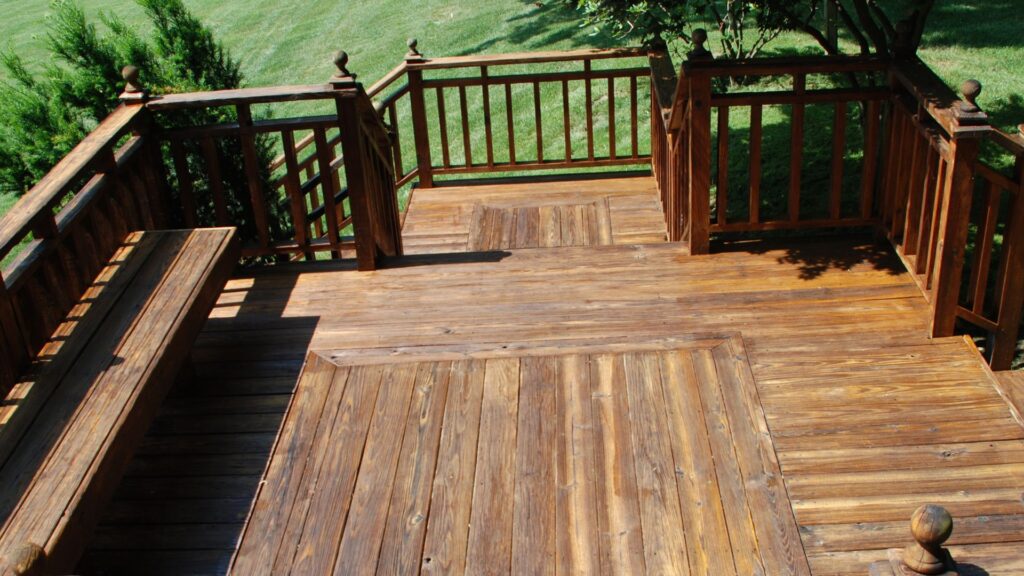
How Much Does Composite Decking Cost In NZ
Composite decking in New Zealand comes with a higher upfront cost compared to timber, but the long-term value makes it a smart investment. The price varies based on the brand, design, and installation method, but understanding the average cost and factors that influence pricing can help you budget effectively for your project.
Average Price Range Per Square Metre
The cost of composite decking in NZ typically ranges between $150 and $350 per square metre. Entry-level boards are on the lower end of the spectrum, while premium brands with advanced features like scratch resistance, richer textures, and extended warranties fall on the higher side. This estimate often excludes labour and additional materials like fasteners or subframe adjustments.
Cost Comparison: Composite Vs Timber Decking
Timber decking is usually cheaper upfront, averaging $90 to $150 per square metre. However, timber requires regular staining, sealing, and maintenance, which can quickly add up over time. Composite decking may cost more initially, but its minimal upkeep and long lifespan make it a cost-effective choice in the long run. Over a 10- to 15-year period, the total expense of composite decking often equals or even undercuts that of maintaining a timber deck.
Factors Affecting Price
Several factors determine the final price of your composite decking project:
- Brand: Established brands like Trex or Futurewood generally cost more due to their durability, warranty, and reputation.
- Design: Textured finishes, wide boards, or unique colour patterns can increase the price.
- Installation: DIY projects reduce labour costs, but professional installation ensures quality and longevity, which can justify the added expense.
- Deck size and complexity: Larger decks or designs with stairs, railings, or custom shapes will raise the total cost.
Tips For Budgeting A Deck Project
Planning your budget early ensures you stay on track. Start by measuring your space accurately and requesting quotes from multiple suppliers and installers. Include extra funds for unforeseen expenses like subframe repairs or custom fittings. If the upfront cost feels high, consider breaking the project into stages—building a smaller deck now and expanding later. Choosing mid-range products can also balance quality and cost without sacrificing durability.
Investing in composite decking in NZ may seem expensive at first, but when you factor in its durability, minimal maintenance, and long lifespan, it often proves to be the smarter financial decision. Careful budgeting and planning will help you build a deck that enhances your outdoor space for decades to come.
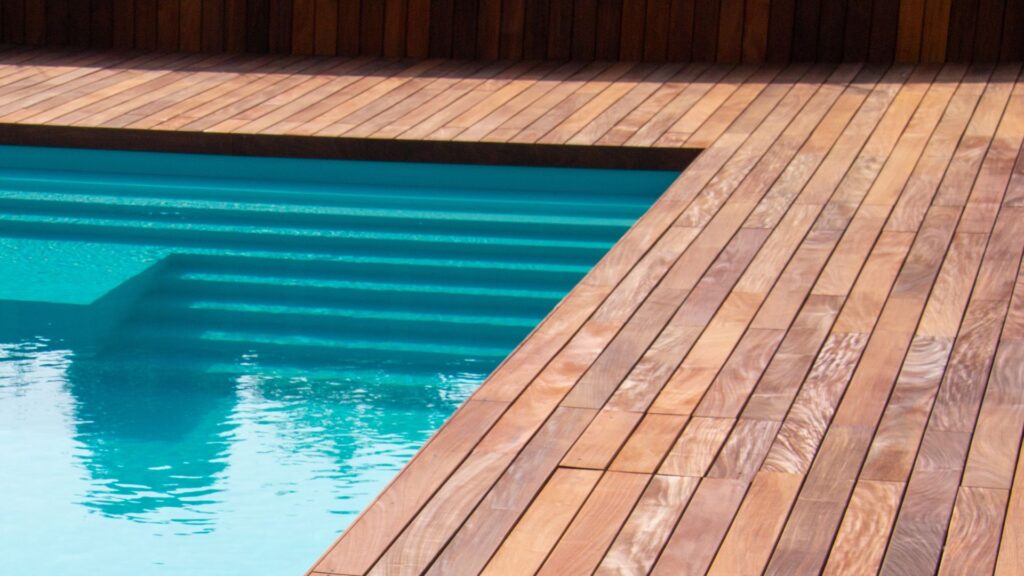
Choosing The Right Composite Decking
Selecting the right composite decking is one of the most important decisions you’ll make when planning your outdoor space. With a growing number of options in New Zealand, it’s worth taking the time to compare brands, materials, and features to find the deck that fits your needs, budget, and lifestyle.
Popular NZ Brands
In New Zealand, several trusted brands dominate the composite decking market. Trex is a well-known global brand, valued for its durability and wide range of finishes. Futurewood is another favourite, offering eco-friendly boards made from recycled materials and available in modern colours that suit Kiwi homes. ModWood, known for its slip-resistant surfaces and long lifespan, is also popular for coastal areas and family-friendly decks. Exploring these brands helps you understand what options suit your space best.
Colour And Texture
Composite decking comes in a variety of colours and textures to match any outdoor design. From natural wood tones like cedar or walnut to modern greys and charcoals, the right colour can enhance your home’s style. Textured boards also add depth and reduce visible wear over time. Choosing a finish that complements your house exterior creates a cohesive and stylish look.
Warranty And Durability
A strong warranty often reflects the quality of the decking. Many leading brands in NZ offer warranties ranging from 15 to 25 years. Look for boards that are resistant to fading, staining, and scratching. Durable materials are especially important in New Zealand’s variable climate, where decks must withstand heavy rain, intense sun, and even coastal salt exposure.
Slip Rating And Safety
Safety should never be overlooked, especially in areas exposed to moisture. Check the slip rating of the decking boards you’re considering. Higher slip ratings ensure a safer surface for children, elderly family members, and even pets. Many NZ brands design boards with textured surfaces to maintain grip even in wet conditions.
Eco-Friendly Credentials
For homeowners who care about sustainability, composite decking is a smart choice. Many brands use recycled plastic and reclaimed wood fibres, helping to reduce waste while producing durable materials. Look for certifications or information on how the brand sources its materials if eco-friendliness is a priority.
Matching Decking With Your Home’s Style
Your decking should feel like a natural extension of your home. Consider your home’s exterior colours, landscaping, and architectural style. For a modern home, a sleek grey or charcoal deck may complement minimalist lines, while warm brown tones suit classic or rustic designs. Samples can help you visualize how the colour and texture will look once installed.
Taking the time to evaluate these factors ensures your investment pays off in both performance and style. By choosing the right brand, finish, and features, you’ll create a composite deck that looks great, lasts for years, and truly enhances your outdoor living space.
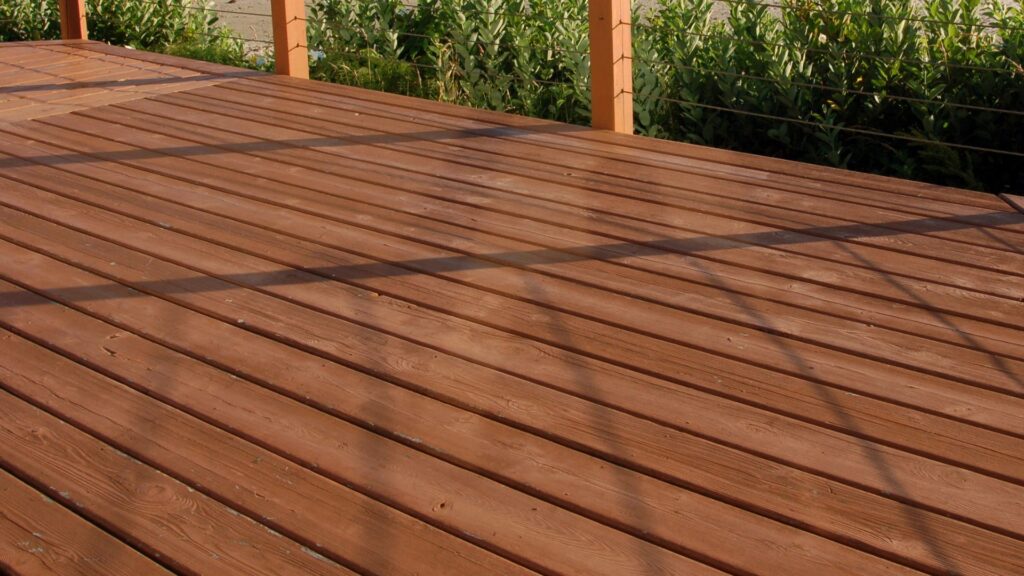
Installation: DIY Or Hire A Pro?
Building a composite deck in New Zealand can be done in two ways: taking the DIY route or hiring a professional installer. Both options have their own benefits and challenges, and your choice will depend on your skills, budget, and the size of your project. Understanding the steps, pros, and cons, and how to find a trusted installer will help you make the best decision for your home.
Steps For DIY Installation
If you’re handy with tools, installing composite decking yourself can be a rewarding project. Here’s a simple guide to follow:
- Plan your layout: Measure your outdoor space accurately and design your deck layout, including any stairs or railings.
- Prepare the site: Clear the area of debris, level the ground, and create a solid foundation using joists or a subframe.
- Install the frame: Ensure your framing is secure and level, as this supports the weight of the decking boards.
- Lay the boards: Start placing the composite boards, leaving consistent spacing between each to allow for expansion.
- Secure the boards: Use the recommended fasteners for your decking brand to avoid damage and ensure durability.
- Add finishing touches: Install edge trims, railings, or fascia boards for a polished look.
Taking the time to plan and follow manufacturer instructions is key to a long-lasting DIY deck.
Pros And Cons Of DIY Vs Professional Installation
DIY installation can save you money and give you the satisfaction of building something yourself. It’s also flexible, allowing you to work at your own pace. But it comes with risks. Mistakes during installation can lead to structural issues, uneven boards, or wasted materials.
Hiring a professional installer, on the other hand, ensures expert craftsmanship and faster completion. Pros know how to handle complex layouts, sloped areas, and custom finishes. The main downside is cost—professional installation adds to your budget but often saves time and reduces the risk of problems down the line.
Tips For Finding A Reliable Installer In NZ
If you decide to hire a pro, take the time to find a reputable decking specialist:
- Check reviews and references: Look for installers with positive feedback and proven experience.
- Verify certifications: Ensure they are qualified and familiar with your chosen composite brand.
- Request multiple quotes: Compare prices and services to find the best fit for your budget.
- Ask for a portfolio: Experienced installers can show examples of previous projects to give you confidence in their skills.
- Get a clear timeline: A detailed plan ensures your project stays on schedule.
Whether you choose to go DIY or hire a professional, proper planning and quality installation are key to a durable, beautiful deck. By weighing your options carefully, you can create an outdoor space that adds value and enjoyment to your home for years to come.
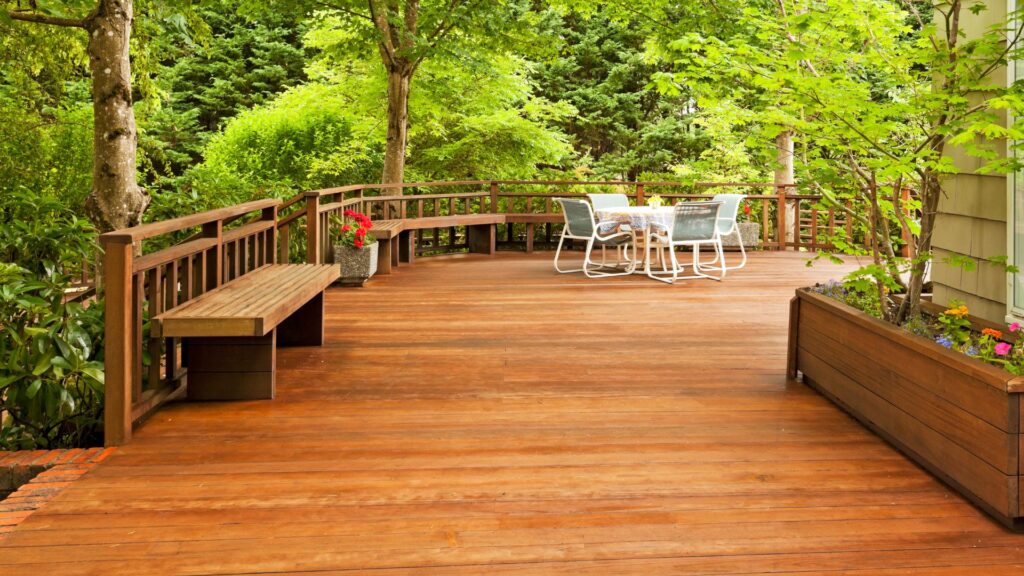
Maintenance Tips For Composite Decking
Keeping your composite decking in top shape doesn’t require much effort, but a few simple habits will help it last for decades and maintain its fresh look. Here’s how you can keep your deck clean, safe, and looking new year after year.
Easy Cleaning Routines:
Composite decking is low-maintenance, but regular cleaning will prevent dirt buildup and stains. Sweep your deck weekly to remove leaves, dust, and debris that can trap moisture. For a deeper clean, mix mild dish soap with warm water and use a soft-bristled brush to scrub the surface. Rinse thoroughly with a garden hose to remove soap residue. This quick routine will keep your deck looking clean and help prevent mold or mildew from forming in damp areas.
What To Avoid (Harsh Chemicals, Pressure Washers):
Avoid using bleach, strong chemical cleaners, or solvent-based products, as these can damage the deck’s protective coating or fade its color. High-pressure washers are also risky; they can erode the surface and cause long-term damage. Instead, stick to gentle cleaning solutions and tools that won’t scratch or strip your decking material.
Seasonal Checks To Keep It Looking New:
At the start and end of each season, inspect your deck for any signs of wear, loose fasteners, or trapped debris between the boards. Clear out any organic matter like leaves or moss to prevent staining and moisture buildup. For coastal areas, where salt buildup is common, rinse your deck occasionally to prevent residue from affecting the surface over time.
Maintaining your composite decking is simple when you stick to a consistent cleaning schedule and avoid harmful practices. With just a little care, your deck will stay safe, stylish, and ready to enjoy throughout the year.
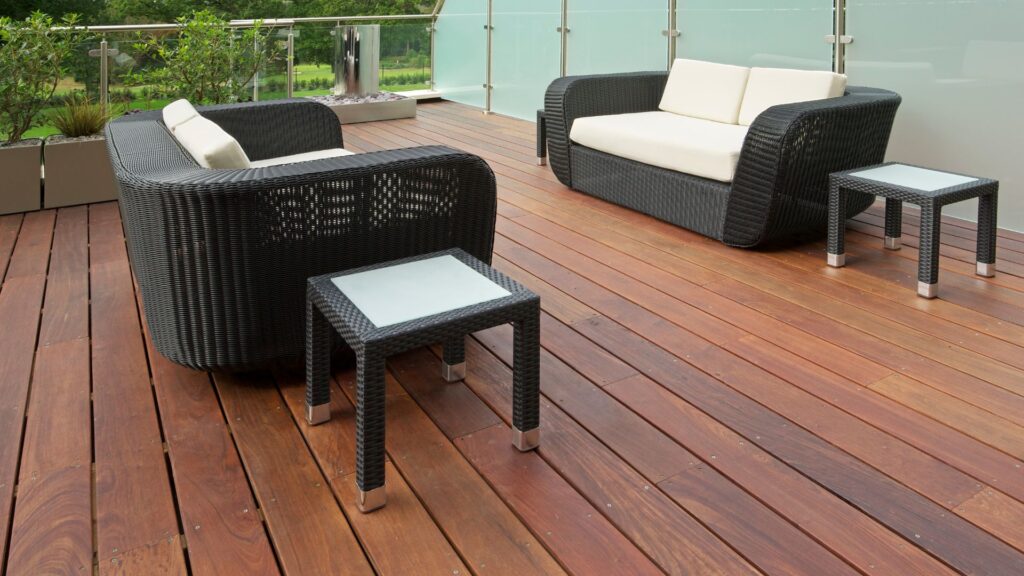
Composite Decking Vs Other Options
When planning a new deck or upgrading your outdoor space, it’s important to compare composite decking with other common materials. In New Zealand, homeowners often weigh their choices between timber decking, PVC or plastic decking, and even alternatives like pavers or tiles for patios. Each option has unique strengths and drawbacks, and understanding these will help you make the right decision for your lifestyle, budget, and long-term plans.
Timber Decking
Timber decking is the traditional choice for many Kiwi homes. It offers a natural look and feel that blends beautifully with gardens and outdoor areas. Timber is also easier to customise with stains, oils, or paints to match your style.
The downside is the high maintenance it requires. Regular staining, sealing, and cleaning are needed to prevent issues like rot, warping, and pest damage. Over time, these maintenance costs can add up, and the lifespan of timber decks is usually shorter compared to composite alternatives.
PVC Or Plastic Decking
PVC or plastic decking is another option that appeals to homeowners seeking a low-maintenance solution. Unlike timber, it does not require sealing or staining, and it resists moisture, pests, and mold.
The trade-off is that PVC decking can look less natural than timber or composite. It may also feel slightly hollow underfoot. In addition, some PVC products can become brittle over time, especially under harsh UV conditions common in New Zealand.
Pavers Or Tiles For Patios
For those who prefer a more solid and versatile surface, pavers or tiles are a strong contender. They are durable, weather-resistant, and can be arranged in endless patterns to create a stylish outdoor area.
The biggest consideration with pavers or tiles is installation. They require a properly prepared base, which can increase costs. Over time, weeds can grow between the joints, and settling may cause uneven surfaces that need occasional adjustment.
Quick Comparison Chart
| Option | Average Cost (per m²) | Maintenance | Lifespan |
| Composite Decking | $150–$350 | Low | 25–30 years |
| Timber Decking | $100–$250 | High | 10–15 years |
| PVC/Plastic Decking | $180–$350 | Low | 20–25 years |
| Pavers or Tiles | $120–$300 | Moderate | 20+ years |
Choosing the right material depends on your priorities. If you value durability and minimal upkeep, composite or PVC decking might suit you best. For a natural look and a lower upfront cost, timber could be appealing, while pavers or tiles are perfect for a unique, solid patio space. Understanding the pros, cons, and costs of each option will help you create an outdoor area that fits your style and lasts for years to come.
Upgrade your outdoor space with durable, low-maintenance composite decking. Explore our range today and start planning your dream deck.

FAQs: About Composite Decking In NZ
What is composite decking?
Composite decking is a blend of wood fibers and recycled plastic. It’s designed to look like timber but offers greater durability and lower maintenance, making it ideal for New Zealand homes.
Why is composite decking popular in NZ?
It suits New Zealand’s climate, resisting heavy rain, UV exposure, and pests. Homeowners love its long lifespan and minimal upkeep compared to traditional timber decking.
How much does composite decking cost in NZ?
Prices typically range from $150 to $350 per square metre, depending on the brand, quality, and installation method. Professional installation will add to the cost.
Is composite decking better than timber decking?
Composite decking lasts longer, needs less maintenance, and resists rot and pests. Timber decking is cheaper upfront but requires more regular care and has a shorter lifespan.
How long does composite decking last?
With proper care, composite decks can last 25 to 30 years or more. Many brands also offer long warranties, often between 15 and 25 years.
Can I install composite decking myself?
Yes, many DIY enthusiasts install composite decking. However, for complex designs or large areas, hiring a professional ensures proper installation and durability.
Does composite decking get hot in the sun?
Yes, like most decking materials, it can heat up in direct sunlight. Choosing lighter colours and adding shade structures can help reduce surface heat.
Is composite decking slippery when wet?
Most quality brands are designed with slip-resistant surfaces, making them safe for families, even in rainy conditions common across NZ.
How do I maintain composite decking?
Maintenance is simple: wash the surface with warm, soapy water and a soft brush a few times a year. Avoid harsh chemicals or high-pressure washers.
Is composite decking eco-friendly?
Yes, most composite decking is made from recycled materials like plastic and wood fibers, reducing landfill waste while offering a sustainable decking option.
Conclusion
Composite decking in NZ offers homeowners a durable, low-maintenance, and eco-friendly solution for creating beautiful outdoor spaces that stand the test of time. From its resistance to rot, pests, and harsh weather to the wide range of styles and colours available, it’s no surprise that more Kiwis are choosing composite materials over traditional timber. By investing in quality composite decking, you not only enhance the look and functionality of your backyard but also increase the overall value of your property. Ready to transform your backyard? Contact a local composite decking specialist today and receive a customized quote that suits your budget and design requirements.


